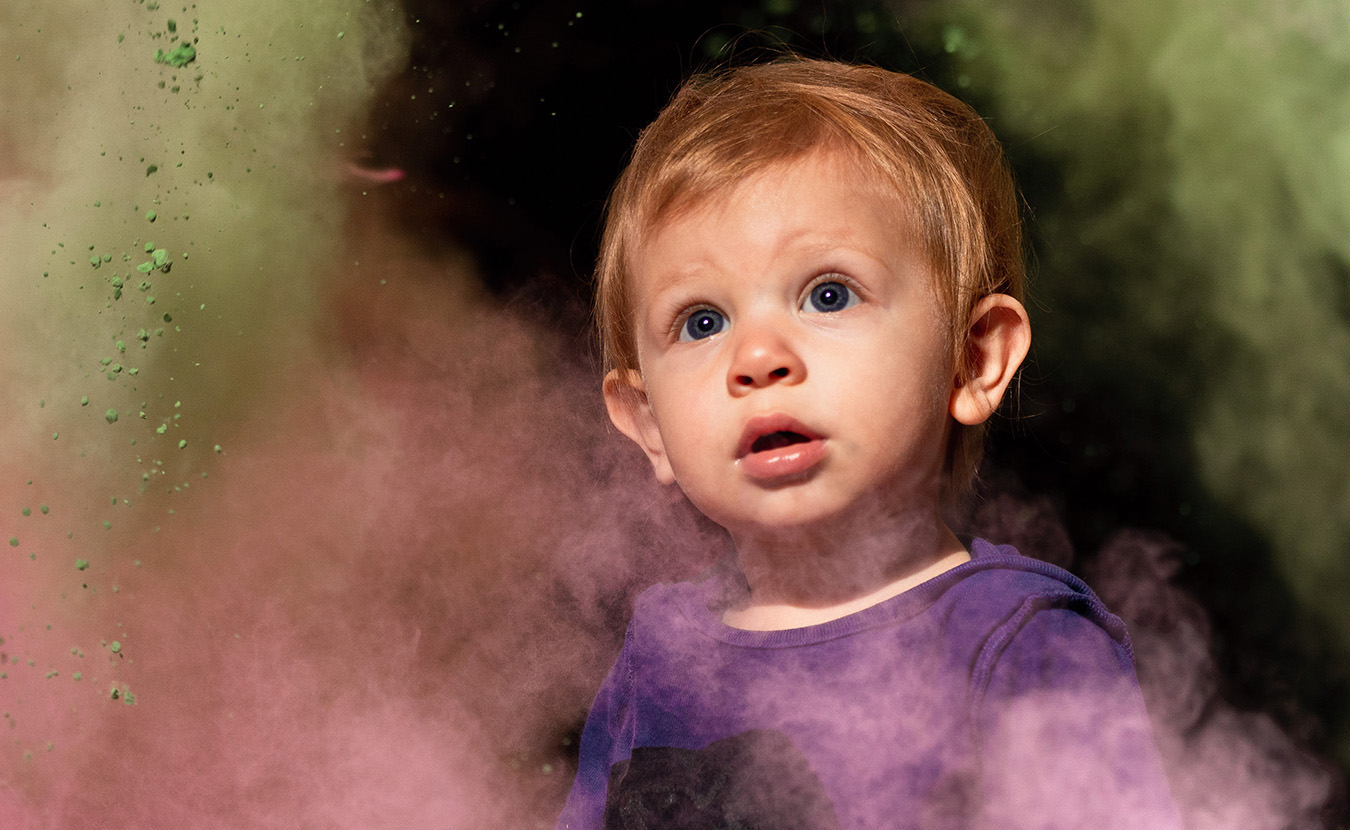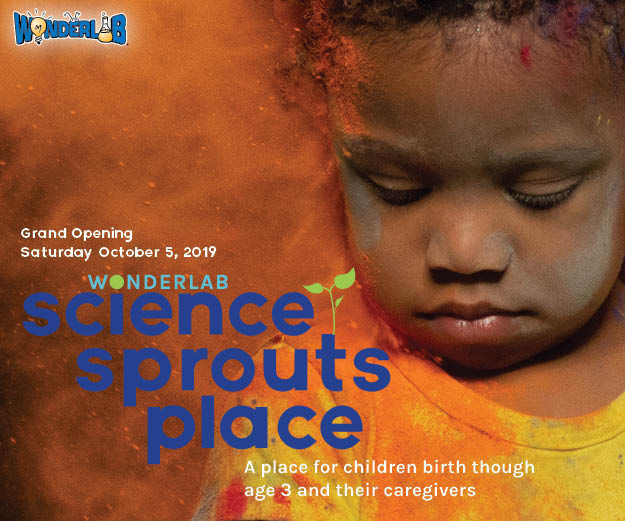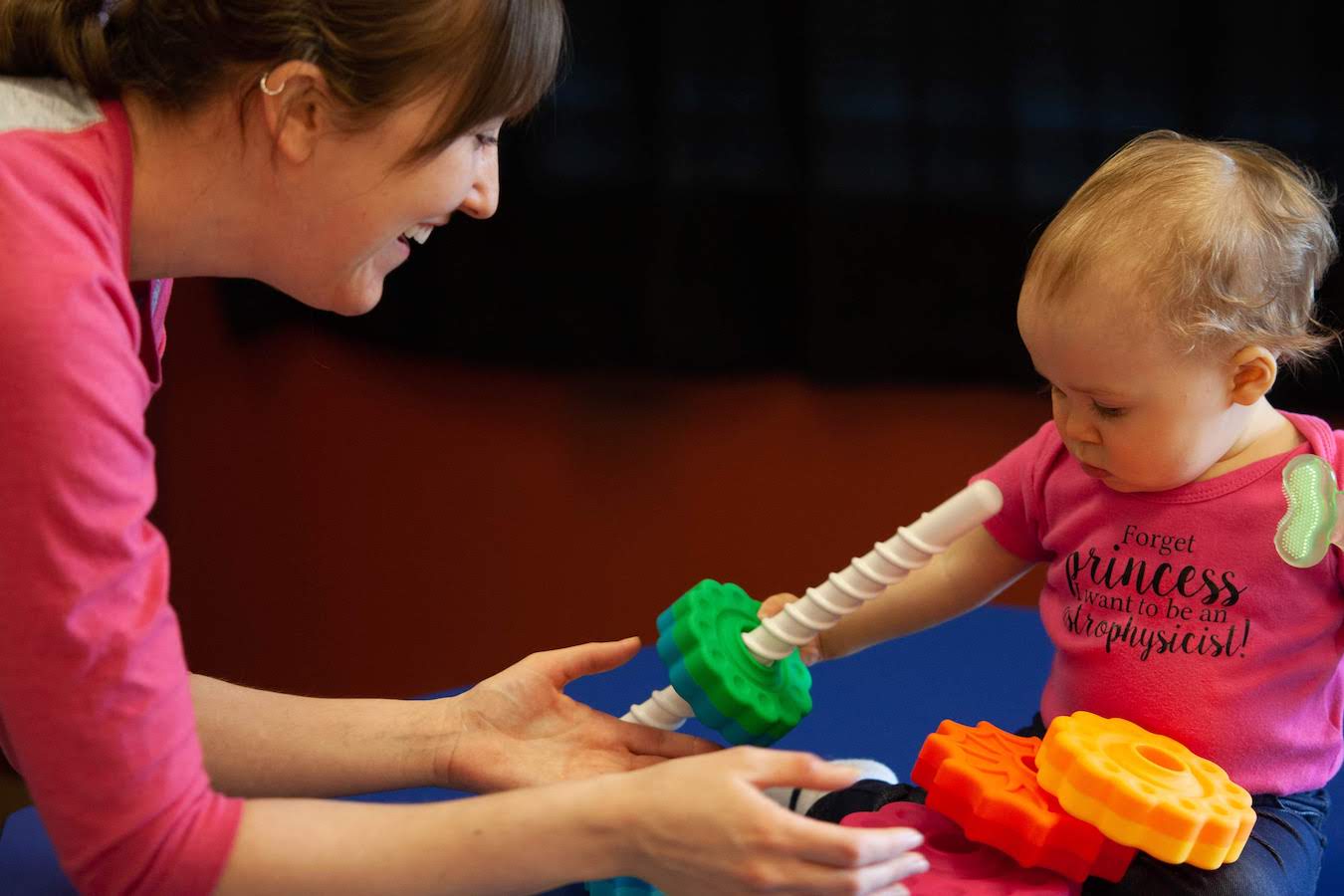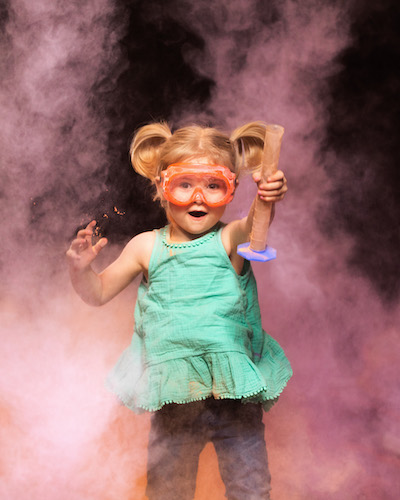— Sponsored Content —

WonderLab is opening a new exhibit area for early-childhood development, called Science Sprouts Place. The interactive space is designed specifically for children from birth through age 3 and their caregivers and includes programs and activities to help infants and toddlers develop fundamental skills, as well as resources to help new parents and caregivers with their child’s early-learning development. | Photo by Ben Meraz, for WonderLab
Science Sprouts Place, the newest exhibit area at WonderLab, opens to the public on Saturday, October 5, 2019. The new activities and interactive exhibits are specially designed for children from birth through age 3 and their caregivers.

The Grand Opening of Science Sprouts Place is Saturday, October 5, 2019, followed by a week of special programming in Sprouts Lab featuring different activities every day from Saturday, October 5 to Friday, October 11. | Photo by Ben Meraz, for WonderLab
“The first few years of life are a truly unique time for learning,” says Emmy Brockman, Education Director at WonderLab. “From language to walking, every moment brings new development. People and environments play a big role in a young child’s healthy development, and WonderLab is so excited to be able to offer new early-learning support to our community!”
Science Sprouts Place consists of two main areas, Baby Wonders and Toddler Trails, as well as an adjacent area, Sprouts Lab, for wet and messy experiments. The area also includes a dedicated nursing space which doubles as an area for stories and quiet time.
Brockman stresses that the interactive exhibits in Science Sprouts Place are designed for babies and their caregivers to use together. “A child’s absolute best teacher is their caregiver,” says Brockman. “Children probably learn more from their caregiver in their first few years of life than from any other future teacher.”
Baby Wonders, specifically for infants, is separated from the rest Science Sprouts Place by a low divider. It features a soft floor that is gentle on young knees, hands and feet; for safety and sanitation, shoes are not allowed in Baby Wonders.
Some of the activities in Baby Wonders include a soft and colorful “pond” area where infants can practice the strength-building activities of Tummy Time and a fanciful bird-themed “shape slider” which encourages fine motor coordination and understanding of cause and effect. There are also “Baby and Me” boxes, which caregivers can open to discover various toys and informational cards to guide interactions. For example, one box will have several rattles with activity suggestions for caregivers, information about reactions to watch for, and research findings on how playing with rattles encourages the understanding of cause and effect. Similar containers with toys for toddlers, called Toddler Totes, can be found in Toddler Trails.
The exhibits in Toddler Trails are designed to develop specific, fundamental skills. There are navigation challenges of the Wavy Walk, the fun of the log slide, and the imaginative play of the Birdhouse, which toddlers climb in to find a nest with eggs. Or toddlers can try climbing through Wiggle Woods — a vertical climbing wall with mesh openings, designed especially for toddler-sized bodies to wriggle, squirm and slither. As toddlers climb higher through the forest motifs, their caregivers will always be within easy reach for encouragement. According to Brockman, Wiggle Woods encourages gross motor-skill development. This helps toddlers start on a journey of self-confidence building and independence.

Katie Burris plays with her daughter Cecily at WonderLab. The new exhibit, called Science Sprouts Place, includes two main areas, Baby Wonders and Toddler Trails, an adjacent area called Sprouts Lab for wet and messy experiments, and a dedicated nursing space that doubles as an area for stories and quiet time. | Photo by Andrea Golden, for WonderLab
Interactive exhibits featuring sound, light and color, ramps and rolling, and building and engineering are found throughout the space. One highlight is a special Air Fountains exhibit that provides a developmentally appropriate place for toddlers to explore the properties of air in motion.
Sprouts Lab, adjacent to Science Sprouts Place, is a dedicated laboratory space where toddlers (and older preschoolers at special times) conduct experiments and build their science identities, while also developing skills through sensory exploration. There will also be exhibits focused on art and science; for example, children can draw on a slate using water — an activity that encourages the hand-and-eye movements related to writing skills, as well as early observations related to the qualities of water and evaporation.

Science Sprouts Place will have different areas designed for specific age and developmental groups. Carefully planned activities and programs will help babies and toddlers practice strength building, improve fine motor coordination, understand the concept of cause and effect, and build self-confidence, among many other early-childhood development skills. Parents and caregivers will also have resources to help their children get the most out of the interactive exhibits. | Photo by Ben Meraz, for WonderLab
“Kids from birth through age four are learning through sensory motor form,” says Brockman. “The things that really matter to them are things that they can touch, taste, feel and smell. And a lot of times, exploring those things means getting messy. We’re super excited to offer kids an opportunity for sensory play in a space like Sprouts Lab where parents and kids both know that it’s safe to make a mess.”
The early-childhood themes at WonderLab change monthly. These will be reflected in Science Sprouts, a program for children from birth through age 3; Discovery Time, a program for children ages 4–6; and now in Sprouts Lab. Upcoming early-childhood themes include “The Senses” in November, featuring activities at the Sprouts Lab such as exploring the sense of smell by playing with playdough scented with spices, and “Chemistry” in December when children can perform activities such as mixing baking soda with lemon juice. Caregivers can experiment alongside their child!
Ella Heckman, the Museum Experience Director at WonderLab, says Science Sprouts Place will be especially useful for caregivers. “We will have a variety of resources for new parents, including prompts about how playing encourages learning,” says Heckman. Plans are also in the works for “Ask an Expert” sessions where parents can speak directly with early-childhood development experts and get the answers they need.
Resources will be part of the Baby Wonders area. Parents can browse through materials about the importance of speaking to your baby, singing to babies, and giving toddlers the space to do things over and over again.
Brockman says she hopes that Science Sprouts Place will help new parents feel more empowered. “My dream is that whenever a baby is born in South Central Indiana the caregiver of that baby will know that WonderLab is a place for them. Bringing their baby to WonderLab will help support their baby’s development and help them thrive. Information for caregivers will also be available. We want to make sure we’re reaching ALL families. This space is meant to be for everyone.”
According to Heckman, every aspect of Science Sprouts Place has been carefully thought out, designed, and prototyped to be appealing, educational, and most importantly safe for toddlers and babies. “We assume everything in there is going to end up in a baby’s mouth, so we keep everything extra clean and safe for the baby. We make sure there are no choking hazards, and all activities are developmentally appropriate,” says Brockman.
The grand opening of the Science Sprouts Place will take place on Saturday, October 5, 2019. There will be special programming in Sprouts Lab featuring different activities every day from Saturday, October 5 to Friday, October 11.
Science Sprouts Place is made possible through generous funding from Andrew Bacher, Brabson Library and Educational Foundation, the Community Foundation of Bloomington and Monroe County, Duke Energy Foundation, Old National Bank Foundation, Royal on the Eastside/Subaru of America, Tichenor Endowment Fund, and the WonderLab Board of Directors. Sprouts Lab is made possible through funding from Bloomington Rotary, Rotary District 6580, Mary Jane Van Hook, and donors to the WonderLab 2019 Spring Appeal.
“I’m very excited about Science Sprouts Place,” says Heckman. “It will be a beautiful and engaging space. We’ve developed the area to tie closely to our early-childhood programs. We hope parents will bring their children, starting at an early age. We want them to grow up with us!”
WonderLab is an award-winning science museum located at 308 W. Fourth St. on the B-Line Trail in Bloomington, Indiana. The museum is open to the public from 9 a.m.–6 p.m. Tuesday through Thursday, 9 a.m.–5 p.m. Friday and Saturday, and 1–5 p.m. Sunday. General admission is $9, and children younger than age 1 are free. For more information call (812) 337-1337, or go online to wonderlab.org or WonderLab’s Facebook page.
— Sponsored Content —

